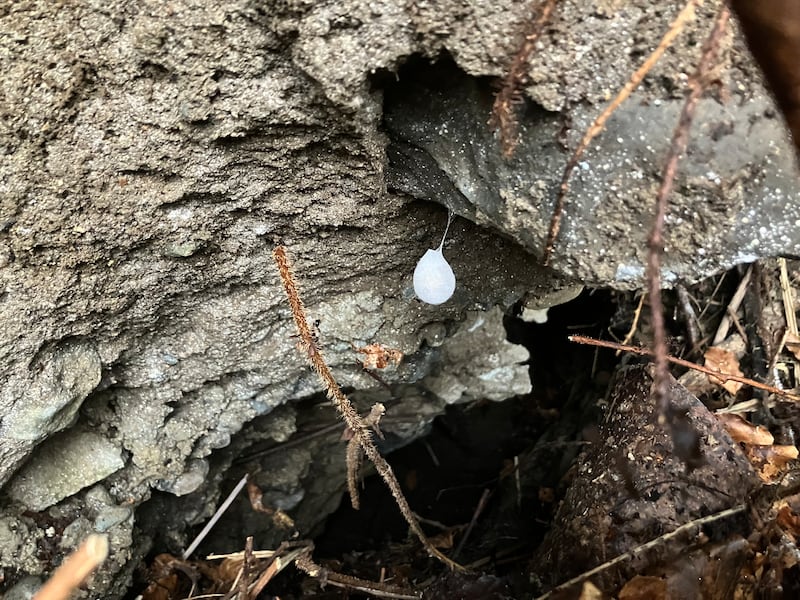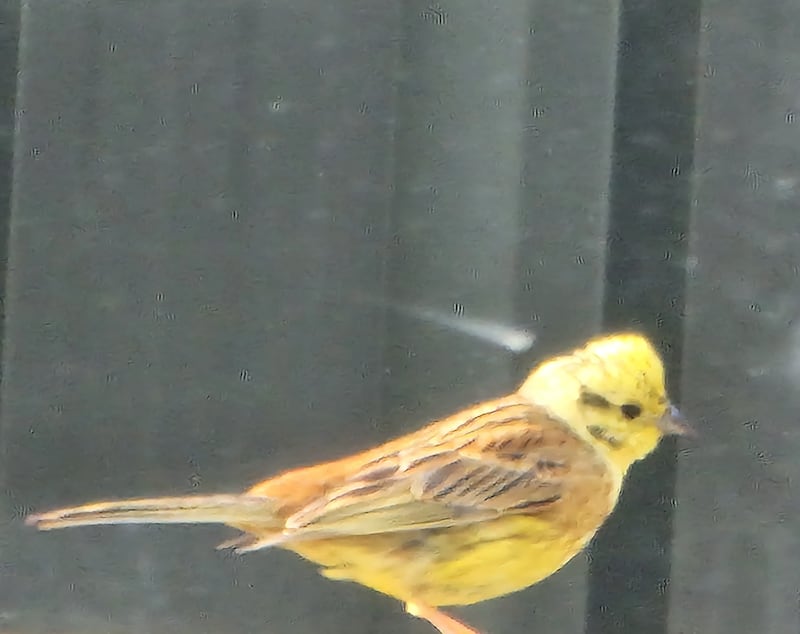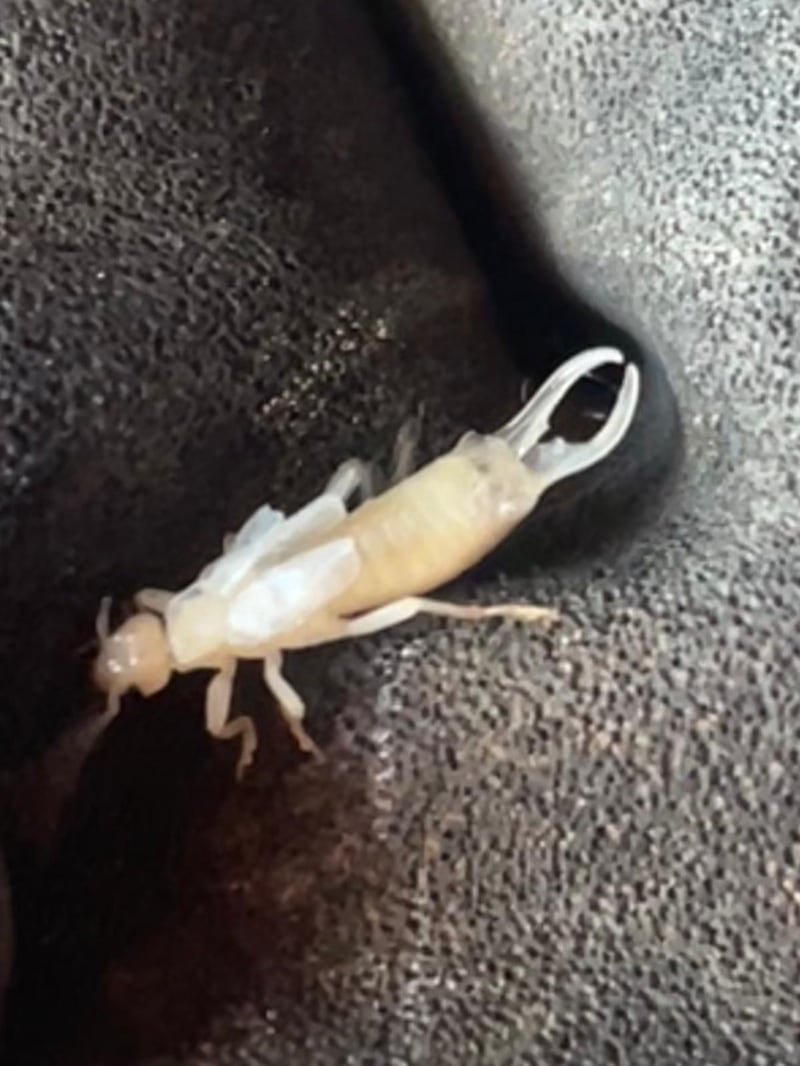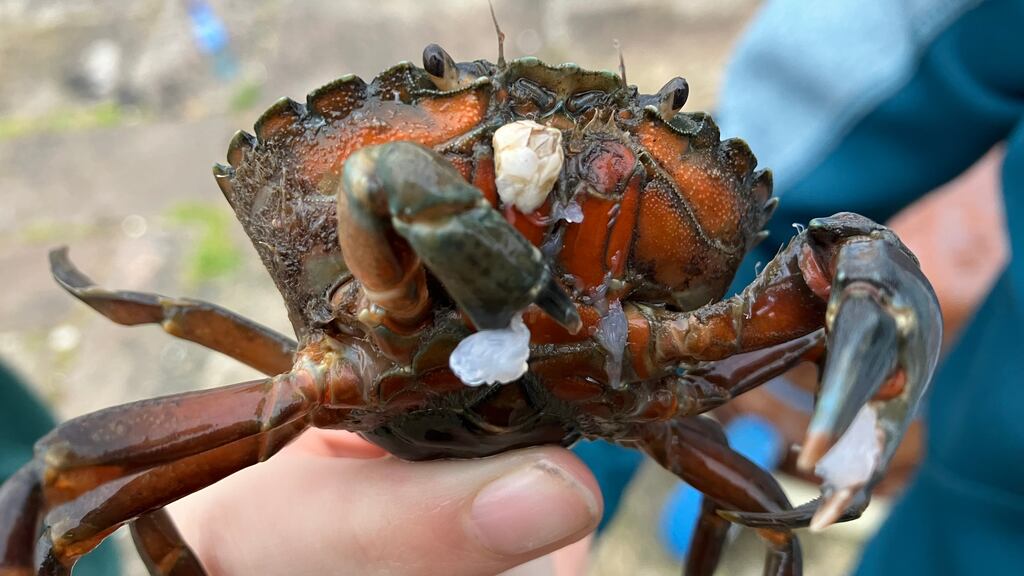While crabbing in Newcastle, Co Down, with my brothers and nephews, we caught this shore crab that had a barnacle just below its mouth. We were amazed at this, but it didn’t seem to prevent the crab from eating as it continued to feed on the fish bait it had grabbed in its claws even as my nephew held it. Chris Wright, Dublin
Shore crabs have to moult their shells as they grow to accommodate their expanding body size. But large males may terminate moulting to enter a state of anecdysis, in which further growth is suspended in order to increase reproductive output. This state can last long enough for barnacles to grow on the shell, but these have no impact on its feeding habits. Your one must be a super stud.

This seems to be an oak eggar moth, which my daughter Amy has photographed on our larch gable. Is it? Mark Boyden, Cork
It is a female oak eggar, which is much larger and paler in colour than the male. After mating, she flies about dropping greyish eggs at random in the vegetation below. Caterpillars hatch out in September and soon go into hibernation. Next spring they will feed on the leaves of oaks or other trees such as willow or hawthorn, pupate in June and emerge as adults in July/August.
RM Block

I have recently moved into my new home. On clearing foliage to access the stream I came across this delightful sac hanging by the tiniest thread. Could you tell me what it is? Claire Roche, Dublin
This is the egg sac of a glossy long-legged spider called Meta menardi – the cave spider, which occurs in dark, damp conditions such as caves, cellars, tunnels and ancient woodlands under dense vegetation and tree trunks. According to spider expert Myles Nolan, the egg sacs of this normally-cave-dwelling spider are occasionally found under large boulders, or other microsites that simulate the “twilight” conditions of caves the spider prefers. The National Biodiversity Centre has only 13 records of this spider, so it is really quite uncommon. The spider itself is rarely seen; the records come from the distinctive egg sacs.

I took this photo through my friend’s kitchen window surrounded by farmland in July. Is it a yellowhammer or an escaped canary? Karl Gygax, Co Meath
It is a yellowhammer – a breeding male in full colour with a bright yellow head. Males sing from the top of a bush or a post in open farmland during the breeding season. Once an exceedingly common bird in a country where mixed farming with cereal crops was widespread, yellowhammers have now declined dramatically in the past 30 years. Even in cereal growing areas, the requirement to plough in stubble has reduced the winter food sources for this seed-eating bird, although a recent provision allows farmers in the Acres Scheme to leave the stubbles unploughed until February.

I was doing some weeding when I came across this unusual little creature. I wonder if it an albino earwig? I’ve never seen one before. Sara Montgomery, Co Meath
We have three species of earwig in Ireland, but this one – the common earwig – is the only one that is widespread. They do not have a pupal stage but just moult their skin as they grow bigger. The underskin then hardens and darkens again a short while later. When they have just moulted, the underskin is white, as you have found here. Despite their name, earwigs do not enter ears – unless of course the ear is filled with flower petals and insect larvae, their favourite foods.
Please submit your nature query, observation, or photo, with a location, via irishtimes.com/eyeonnature or by email to weekend@irishtimes.com





















